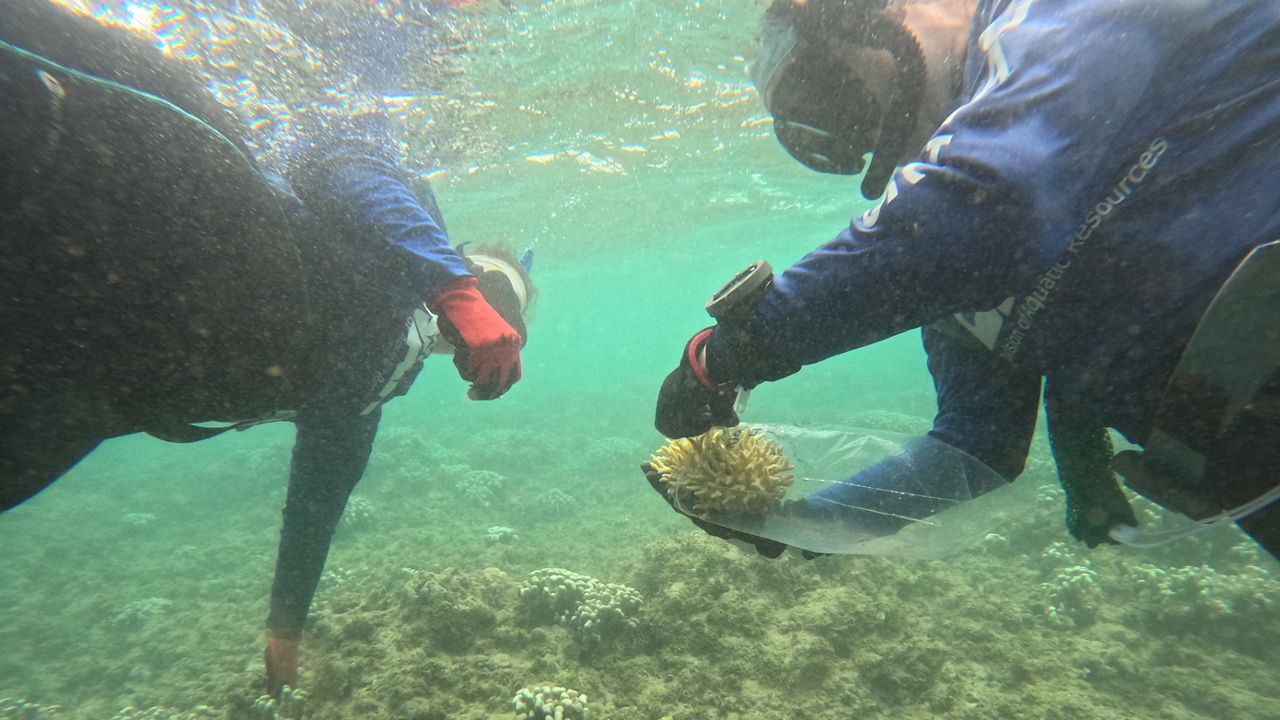People are increasingly releasing illegal, non-native aquarium fish, seaweeds and invertebrates into Hawaii’s waters, according to Dr. Andrew Rossiter, director of the University of Hawaii-Waikiki Aquarium.
To stop this, the UH-Waikiki Aquarium, Hawaii Department of Agriculture, Department of Land and Natural Resources, and other partners launched the “Don’t Let it Loose” campaign.
The campaign educates people about the harms caused by the release of non-native marine aquarium species in Hawaii’s oceans and other waterways.
On Monday during a news conference, Rossiter said there are two common scenarios where people who keep aquariums release non-native marine life into Hawaii’s waters.
The first happens when someone has fish or corals that become too big for their aquariums and they release them into the ocean. “They think they’re doing the kind thing,” said Rossiter.
The second scenario is when someone puts fish or corals into Hawaii’s ocean with the hopes they will propagate and can later be harvested and sold for aquariums. “This is inexcusable,” said Rossiter.
The latter scenario is likely what happened at ʻAnini Bay on Kauai, where DLNR’s Division of Aquatic Resources removed several colonies of non-native coral, after first being spotted in 2021 with zip ties around them.
Over the last four years, DLNR’s Division of Aquatic Resources Administrator Brian Neilson said his team has responded to 19 different introductions of non-native coral species onto Hawaii’s reefs. “These species are bad for the ecosystem. They can out-compete native species. They can introduce new disease. They can even be harmful to human health,” said Neilson.
Responding to these introductions via removal or long-term management can be labor-intensive and expensive. Ever worse, some non-native marine species released into Hawaii’s oceans spread rapidly and are impossible for conservationists to fully eradicate.
Along with releasing aquarium fish responsibly, Neilson said it is important to release aquarium water down the sink, toilet or tub — and never into the ocean. “That can also be a source of introduced disease or plants and invertebrates that you can’t see with the naked eye,” said Neilson.
Rossiter, with the UH-Waikiki Aquarium, noted people also release freshwater species into Hawaii’s rivers and reservoirs. For example, he said redtail catfish from the Amazon, which can grow to be about four-feet long, have been found in Hawaii’s waterways.
In Hawaii, it is illegal for people to import and possess most non-native marine aquarium animals. Individuals found in possession of illegal animals can be charged with a Class C felony, face fines of up to $200,000 and up to three years in prison.
HDOA encouraged people to only buy aquarium species from reputable local pet stores — and not from illegitimate internet sites.
People may voluntarily surrender illegal animals, including aquarium species, under the HDOA Amnesty Program — with no questions asked and no penalties. Animals may be dropped off at the Waikiki Aquarium or any HDOA Plant Quarantine Office statewide.
“It takes all of us to protect Hawaii and we encourage hobbyists to voluntarily surrender illegal animals through the HDOA Amnesty Program. This is a safe and responsible way to protect our unique environment,” said Sharon Hurd, chairperson of the Hawaii Board of Agriculture. “We also note that we do our best to find an appropriate and legal home for animals turned in under amnesty.”
For the last few years, the Waikiki Aquarium has been collecting non-native marine life brought to them or confiscated from importers and plans to open a new exhibit in the next six months featuring some of these introduced species, including stingrays from the Amazon.
Officials also encouraged swimmers, divers, and fishers to report anything suspicious they see in Hawaii’s oceans. Tips about illegal species may be made confidentially to 808-643-PEST (7378).
Events related to the week-long campaign kick off can be viewed here.
Michelle Broder Van Dyke covers the Hawaiian Islands for Spectrum News Hawaii. Email her at michelle.brodervandyke@charter.com.



